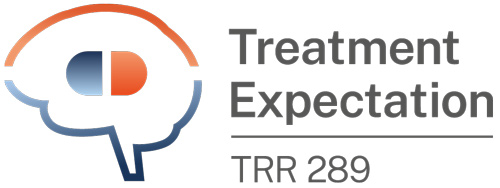An encouraging squeeze of the hand and emotional support help young patients. © Prostock-studio/stock.adobe.com (modified)
An encouraging squeeze of the hand and emotional support help young patients. © Prostock-studio/stock.adobe.com (modified)
How do expectations influence the pain experienced by children and adolescents?
Parents know from everyday life that the intensity of pain felt by children and the success of treatment depend on many factors. The positive and negative expectations of the child can be crucial. How do these expectations develop and what role do previous experiences play? Does the mother, as a trusted relation, have any influence? And do these expectations persist if the pain is treated in a different way? This project explores how treatment expectations change the pain experienced by children, taking into account the effect of previous treatment experiences, age and social context.
Positive and negative expectations and the pain experienced by children and adolescents
This project investigates the effects of treatment expectations in healthy children and adolescents. Two studies will examine a) the analgesic and hyperalgesic effects of positive and negative treatment expectations and the modulating role of a trusted relationship and b) the clinically relevant question of whether and to what extent previous treatment experiences influence future treatment expectations and effects, and whether these apply to other forms of treatment. MRI will be used to investigate the modulating influence of brain development on the effect of positive and negative treatment expectations in children and adolescents.
In close cooperation with these projects
How we create our own expectations – and the role that attention plays in this
Prof. Dr. Christian Büchel
How expectations influence stomach ache – and how the experience of pain changes treatment expectations
Prof. Dr. Sigrid Elsenbruch
PD Dr. Julian Kleine-Borgmann
How do expectations control our emotions - and what does attention have to do with it?
Prof. Dr. Stefanie Brassen
Does "learning through observation" relieve depressive symptoms in children and adolescents?
Prof. Dr. Johannes Hebebrand
Prof. Dr. Yvonne Nestoriuc
Project Lead

Prof. Dr. Christiane Hermann

Dr. Alexander Winkler




